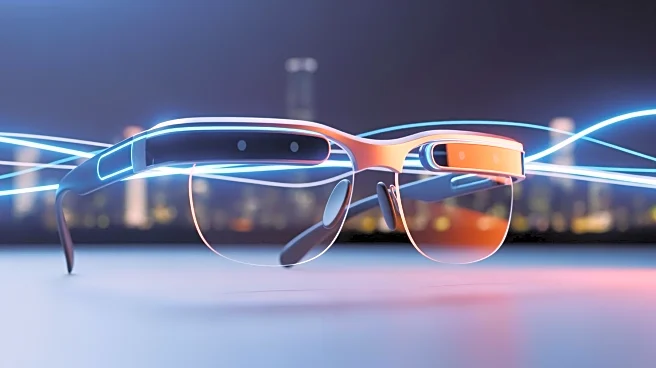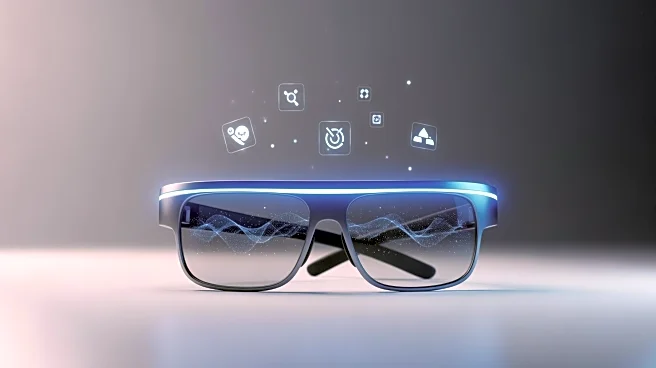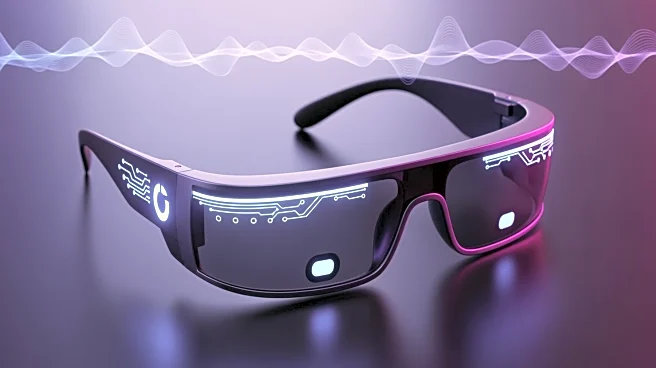What's Happening?
The year 2025 is poised to be a turning point for augmented reality (AR) glasses, with several major companies and startups unveiling new models that could replace smartphones. Companies like Meta, Apple,
and Samsung are leading the charge with innovative designs that prioritize comfort, social features, and integration with existing ecosystems. Meta's Ray-Ban collaboration and Apple's 'Liquid Glass' concept are examples of how AR glasses are becoming more practical and stylish. Meanwhile, startups like Viture are gaining attention for their AI-driven visors, highlighting the competitive landscape in the AR market.
Why It's Important?
The development of AR glasses represents a significant shift in how consumers interact with technology. By offering a hands-free, immersive experience, these devices have the potential to change the way people access information, communicate, and perform daily tasks. The competition among tech giants and startups is likely to drive innovation and lower costs, making AR glasses more accessible to a broader audience. This could lead to widespread adoption and integration of AR technology into various aspects of life, from navigation and gaming to education and professional applications.
What's Next?
As AR glasses become more mainstream, companies will need to focus on building robust ecosystems that support a wide range of applications. This includes developing content and services that enhance the user experience and provide practical benefits. Additionally, the industry will need to address challenges related to privacy, data security, and user acceptance. The success of AR glasses will depend on their ability to seamlessly integrate into users' lives and offer tangible improvements over existing technologies.














